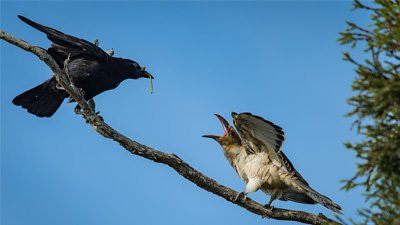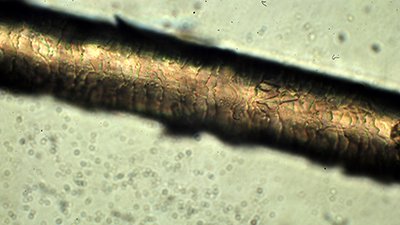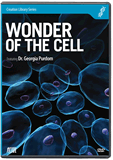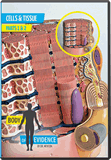Cell Diversity Explained by Creation
The abundance of cellular diversity is better explained by biblical creation than evolutionary theory.
Earth’s plant and animal diversity is estimated to be 10–30 million species. If you add in bacteria, the diversity increases by another 10 million species. All of these living creatures are made of cells with many types of specialized cells. Truly the diversity of cell types or cell diversity is amazing.
Consider humans alone. Of the 30 trillion cells that make up the human body, it is estimated that there are 200 different cell types; however, we are learning now that there are many subsets of cells within the 200 cell types. This increases the number of human cell types by a thousand-fold or more.
For instance, when white blood cells were discovered in the immune system, only a few types were known: the lymphocytes and some varieties of phagocytes. Now we believe there could be almost endless varieties of lymphocytes and phagocytes all working together to help us fight cancer and infection. We also thought that there were only a few types of neurons (nerve cells): the sensory neurons, interneurons, and motor neurons. Now we believe that there could be thousands of subtypes of these categories of neurons.
Cell biology and human anatomy studies can be traced back over 300 years, so why are we only now discovering the immense diversity of cells?
Evolution—A Huge Stumbling Block to Discovering Diversity
I believe we can make a very good case that it was the idea of reductionism that caused a delay in the discovery of the diversity of cell types. With this view, evolutionary biologists assume that cells should more or less be the same because they are constructed of the same parts and originated from a common ancestor.
This view naturally predicts that there is a lot of similarity among cells. For instance, the discovery of the structure of DNA in 1953 gave a massive boost to the discipline of cellular molecular biology. However, with the discovery of DNA, biologists focused on the relationship among living things, not the diversity or differences among living things, because DNA, the molecule of heredity, inferred a common ancestry (in their view) of all living organisms.
Trying to Keep Things Simple
This commitment to reductionism can be traced throughout the history of cell biology. For instance, when cells were discovered it was thought that perhaps they were simple building blocks, similar to bricks used to construct buildings. Early cell naturalists thought they were made of outer covering and a simple gooey “protoplasm” filling, like a jelly donut. This idea persisted for centuries.
In the last century, it was discovered that cells are made of elaborate arrangements of carbohydrates, lipids, and proteins. These macromolecules make up complex machines in cells which perform functions with computer-like calculation and precision. Once complexity was discovered as part of the basic functions of cells, this also influenced evolutionary cell biologists to postulate that there must have been only one cell type in the early evolution of life on earth because it would be difficult if not impossible for evolution to create multiple complex cells types.
One Cell Won’t Do
The evolution of just one cell type from random parts would be considered to be quite a feat!
The complexity of cells and the differences or discontinuity among “modern” cells would infer that there were perhaps more than one ancestral “protocell” involved in the early diversification of life on earth. This presented somewhat of a conundrum because the evolution of just one cell type from random parts would be considered to be quite a feat! In fact, this problem is subtly acknowledged as intractable because the current theory for how multiple lineages of complex cells arose simultaneously does not involve the evolution of multiple kinds of protocells but instead involves the making of new cell types by cells eating cells! Thus, it is believed that the first cell type consumed their own kind to make a new kind of cell that now had internal parts from the eaten cells.
This led to the idea that all living things were derived from two related fundamental cell types: bacteria-like cells and the cells we find in plants and animals that contain the internalized parts. These internalized parts were then thought to make compartments in the cell. One very important compartment in plant and animal cells is the nucleus. It’s a membrane-bound structure or chamber inside the cell that contains the DNA, the blueprint of life. In contrast, the DNA of bacteria-like cells is NOT surrounded by a membrane. When this was discovered, biologists called the bacteria-like cells “prokaryotes” meaning “before nucleus” and they called the plant and animal cells, “eukaryote” meaning “nucleus within.”
When they looked a bit closer at living organisms, they found that indeed each living organism contained “prokaryote” cells and “eukaryote” cells. But the eukaryote cells were dramatically different from one another in size and shape, and they stuck together in exquisite ways to make things like hearts and muscles and eyes! We now know that there are many kinds of cells in living things.
Ever-greater Variety to Explain
Therefore, even though there has been a commitment to the idea that all living things were derived from two cell types, it’s becoming clear that other complex cell types would have to evolve or arise independently. In fact, we can easily make a case, based on what we find in living things, that there are at least four cell types that we would need at a minimum to create all the diverse cells and creatures on earth.
The four different types of cells are the animal cells and plant cells, which are both eukaryotes, and eubacterial cells and archaebacterial cells, which are both prokaryotes. The animal and plant cells share similar eukaryotic structures like a nucleus and other internal organelles, such as the mitochondria. But a closer inspection shows that plant cells have an elaborate cell wall that is built between cells during cell division, an extremely complex process that does not occur during animal cell reproduction.
Most prokaryote organisms can be collectively called microbes. But a closer inspection of the prokaryotes shows them to be very different in some respects. Archaebacteria have varieties that can live in acid or boiling water or extremely high salt concentrations, and they can have very different outer surfaces to handle these extreme environments.
Creation—An Alternative View of Cell Diversity
If we look at this from a creation perspective, we can see why God created so much diversity among both prokaryotes and eukaryotes.
Created Diversity of Prokaryotes
The biomatrix theory tells us that the main function of microbes on earth is to provide a life-supporting matrix on earth that recycles the nutrients that support life. And when we look at the eubacteria, we see creatures that are designed to live in many places because they wear a chain-mail coating that protects them from water and air pressure. What’s more, we would expect that some nutrients can be harvested from some very extreme places, and this explains the existence of the extremophiles, the archaebacteria, which are resistant to heat, acid, methane gas, and other noxious substances.
Created Diversity of Eukaryotes
The rest of the living creation is made from eukaryotes. According to the Bible, plants have many uses, with a primary service as food for humans and animals. A eukaryotic cell wall structure that is strong and stiff and supports ongoing cell division and supports their role as food for animal and human life on earth. Animals and humans have elaborate internal tissues and organs, and their cells are much more pliable. These eukaryotic cells exercise much more control over cell division and do not divide all the time, yet they are much more transformative than prokaryotes as they change dramatically during the development of the living being.
Even though plant and animal cells have some differences, they are also very similar in some ways. So why then do eukaryotic cells look similar or share some very common attributes? One way to look at this is to look at the design of the construction of physical things. We note that many physical things are built from some very common building materials. Take Lego blocks, for example. Cars, ships, and entire cities can be made from them, and there are only a few types of Lego blocks, with limited options for shape and height, having two, three, or four tabs. Complex things can be made from even only one type of these simple blocks.
We see the same principle in molecular biology: there are four main macromolecules built from single building blocks, namely proteins, carbohydrates, lipids, and nucleic acids.
We see the same principle in molecular biology: there are four main macromolecules built from single building blocks, namely proteins, carbohydrates, lipids, and nucleic acids. The amino acids that make up proteins are the simplest single building blocks, yet proteins are the most complex molecules found in living things. Proteins are the reason for the function and shape of living things at the cell and tissue levels.
So we can make a case that God designed eukaryotic cells as a type of common building block but one that can actually be molded into different building blocks in a human body. For instance, imagine a Lego set that can morph and change as you start to build a structure! We all start out as a fertilized egg that divides into many very similar-looking eukaryotic cells, but within weeks of development, thousands of different cell types are constructed to make a human body with tissues and organs in just eight weeks!
Pliable Parts Promote Designed Diversity and Uniqueness
But how did these cells that all have the same kind of internal pockets and a nucleus appear to be different after this development process? The secret lies at the level of the plasma membrane: a fluid-like structure that surrounds the cell and forms a remarkable flexible barrier but can also act as a door to the outside world. This very fluid barrier, which can make the cell a very secure structure, can be pushed and pulled and twisted by proteins inside the cell, making different cell shapes. Some of these cell shapes are very long and tubular, like nerve cells, or spherical, flat, cuboidal, and even starlike!
What is perhaps even more remarkable is that these same cells, which make up all the diverse tissues in the human body, make each human person unique. In fact, identical-looking cells in one location like the brain or heart can be slightly different from the cells right next to them. What is the basis of this uniqueness?
We can answer in one phrase: membrane proteins. Human body cells can make over 100,000 different proteins, and some of these proteins are placed in different arrangements on the membrane surface of the cell, making that cell appear unique to other cells around it.
There are thousands of different immune cells and neurons in the human body, and their differences are mostly attributed to cell-surface proteins. What’s more, every human has a unique set of proteins on their cell surface called MHC proteins. These proteins are somewhat mysterious. We know that they are also involved in the immune system but that they also make our tissues incompatible with the people around us. This is why a person needs a heart transplant from a person who is a “tissue match.” Remarkably, we can find a tissue match because there are people on earth who share the same MHC proteins on their cell surface as you, for instance, roughly 1 in 100,000 people have the same MHC that you do. Yet these individuals remain unique in other ways.
Creative Recombination of Cell
Even more diversity occurs when some cells invade the space of other cell types. For instance, bacteria, fungus, and algae can all live separate lives, but they can also live in close association, making a plant-like creature called a lichen, which is completely different from any creature on earth and different from their single-cell life forms! We once believed that in the ocean, small single-celled algae clumped together to make phytoplankton, and non-photosynthetic cell-life made up groups of organisms we call zooplankton. Both these types of creatures fall into a category called plankton, yet they were thought to live mostly separate lives. This flowed from the idea that plants and animals are really different creatures, but now we believe that most of the plankton in the ocean involves creatures made from the merging of both cell types, called mixotrophs! Mixotrophs are made when the phytoplankton and zooplankton cells merge together. It’s like a plant/animal hybrid! However unlike the evolutionary hypothesis that all creatures today originated from cells eating cells, we have no evidence of complex plant-animal hybrids being derived from these merged-cell mixotrophs.
These ideas of uniqueness and individuality and diversity and association of cells are very similar to the body of Christ. God made each of us with talents and personalities that often are attractive to others around us. When we work together, we find complementarity that can only result from the association of unique individuals. It’s fascinating to think that we could find uniqueness in each person of the billions living on earth today—and our cells contribute to that uniqueness. Yet, even with our uniqueness we remain very similar at the basic cell-parts level. And of course all people are made in the image of God, worthy of honor and respect. And Christians have the privilege of an eternal bond with one another as joint heirs with Christ.
All of these observations point us to a single Designer of all of life, who fashioned life into all the millions of unique and wondrous creatures using these exquisite building blocks we call cells. This speaks of a spectacular, single Creator-God, who also expresses uniqueness, complementarity, and diversity and fellowship in the Father, Son, and Holy Spirit!
Recommended Resources

Answers in Genesis is an apologetics ministry, dedicated to helping Christians defend their faith and proclaim the good news of Jesus Christ.
- Customer Service 800.778.3390
- © 2024 Answers in Genesis








